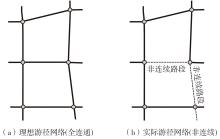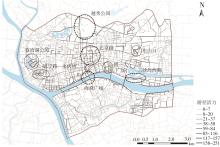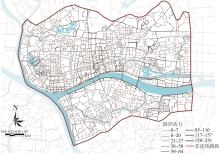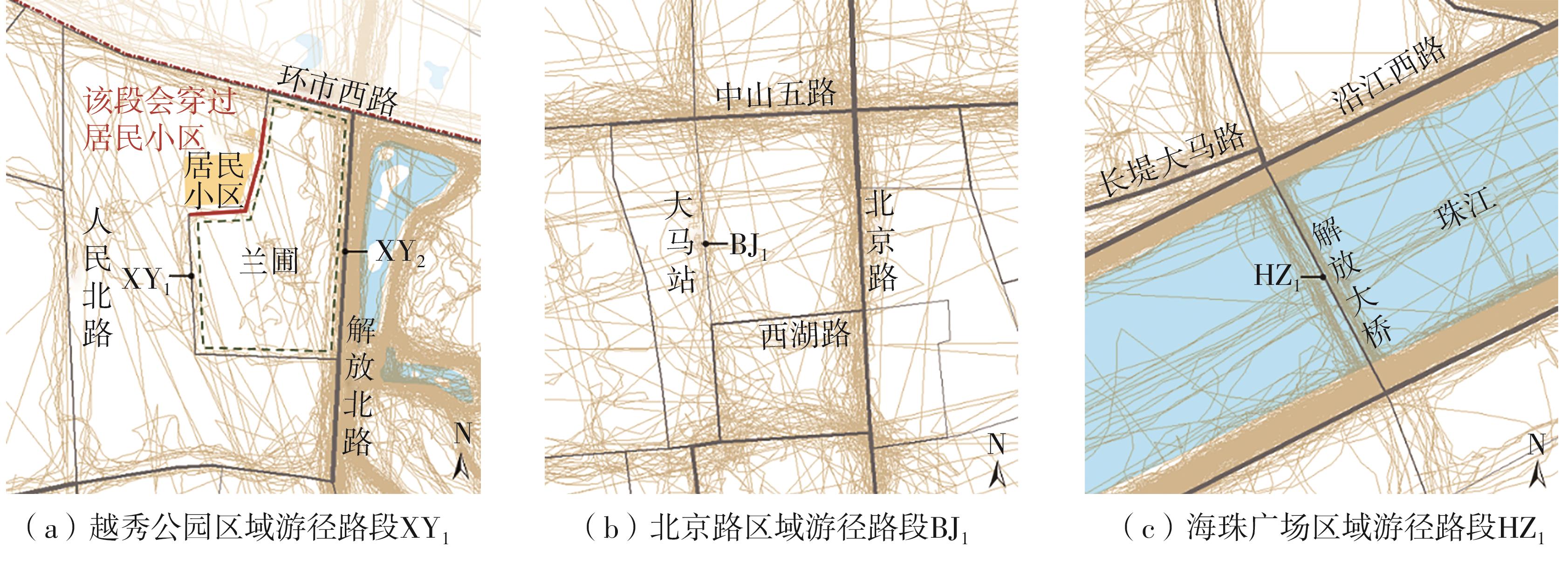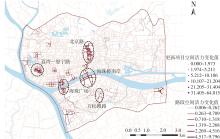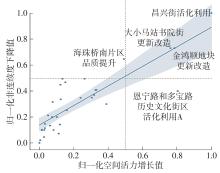| 1 |
COSTA C .An emerging tourism planning paradigm?A comparative analysis between town and tourism planning[J].International Journal of Tourism Research,2001,3(6):425-441.
|
| 2 |
MURAKAMI E, WAGNER D P .Can using global positioning system (GPS) improve trip reporting?[J].Transportation Research Part C Emerging Technologies,1999,7(2/3):149-165.
|
| 3 |
张治华 .基于GPS轨迹的出行信息提取研究[D].上海:华东师范大学,2010.
|
| 4 |
EDWARDS D, GRIFFIN T .Understanding tourists’spatial behavior:GPS tracking as an aid to sustainable destination management[J].Journal of Sustainable Tourism,2013,21(4):580-595.
|
| 5 |
TACZANOWSKA K, GARCIA-MASSÓ X, MUHAR A,et al .Evaluating the structure and use of hiking trails in recreational areas using a mixed GPS tracking and graph theory approach[J].Applied Geography,2014,55:184-192.
|
| 6 |
SHEN J, CHENG T .A framework for identifying acti-vity groups from individual space-time profiles[J].International Journal of Geographical Information Science,2016,9(30):1785-1805.
|
| 7 |
NIELSEN N C, HARDER H, TRADISAUSKAS N,et al .Approaches to GPS-survey of tourist movements within a North Sea island destination[C]∥Proceedings of ENTER 2010 Conference.Lugano:[s. n.],2010:10-12.
|
| 8 |
ZACHARIAS J, ZHANG R .Revealed bicyclist route preferences and street conditions[J].Transportation Research Record Journal of the Transportation Research Board,2016,2587(1):17-22.
|
| 9 |
GONZÁLEZ F, MELO-RIQUELME C, GRANGE L D .A combined destination and route choice model for a bicycle sharing system[J].Transportation,2016,43(3):407-423.
|
| 10 |
黄潇婷,李玟璇,张海平,等 .基于GPS数据的旅游时空行为评价研究[J].旅游学刊,2016,31(9):40-49.
|
|
HUANG Xiaoting, LI Wenxuan, ZHANG Haiping,et al .Evaluation of tourist temporal-spatial behavior based on GPS data[J].Tourism Tribune,2016,31(9):40-49.
|
| 11 |
NEWMAN M E J .Assortative mixing in networks[J].Physical Review Letters,2002,89(20):208701/1-5.
|
| 12 |
NARAYANA M V .Route optimization by using multiple travelling sales person problem in MANETs[J].International Journal of Scientific Research in Computer Science,Engineering and Information Technology,2018,3(1):782-790.
|
| 13 |
BAGGIO R, SCOTT N, COOPER C .Network science:a review focused on tourism[J].Annals of Tourism Research.2010,37(3):802-827.
|
| 14 |
刘亮 .复杂网络基元研究方法及应用[M].上海:上海交通大学出版社,2018.
|
| 15 |
BOCCALETTI S, LATORA V, MORENO Y,et al .Complex networks:structure and dynamics[J].Phy-sics Reports,2006,424:175-308.
|
| 16 |
HILLIER B, HANSON J .The social logic of space[M].Cambridge:Cambridge University Press,1989.
|
| 17 |
GEHL J .Life between buildings[M].[S. l.]:VAN Nosrand Reinhold,1987.
|
| 18 |
LIU Z, LIN Y, DE MEULDER B,et al .Can greenways perform as a new planning strategy in the Pearl River Delta,China?[J].Landscape and Urban Planning,2019,187:81-95.
|
| 19 |
GOBSTER P H .Perception and use of a metropolitan greenway system for recreation[J].Landscape and Urban Planning,1995,33:401-413.
|
| 20 |
何卓书,许欢,黄俊浩 .基于空间句法的历史街区商业空间分布研究——以广州长寿路站周边街区为例[J].南方建筑,2016(5):84-89.
|
|
HE Zhuoshu, XU Huan, HUANG Junhao .Commercial distribution research of historic area based on space syntax:a case study of historic area surrounded Changshoulu Station in Guangzhou[J].South Architecture,2016(5):84-89.
|
| 21 |
盛强,杨滔,刘宁 .空间句法与多源新数据结合的基础研究与项目应用案例[J].时代建筑,2017(5):38-43.
|
|
SHENG Qiang, YANG Tao, LIU Ning .Fundamental research and project applications of integrating space syntax and multiple types of new data[J].Time+Architecture,2017(5):38-43.
|
| 22 |
PORTUGALI J .What makes cities complex?Complexity,cognition,urban planning and design[R]∥Springer Proceedings in Complexity.[S. l.]:Springer,2016.
|
| 23 |
张森,张薇,曾坚 .城市绿道公园活跃度的影响因子及其统计[J].城市问题,2017(4):98-103.
|
|
ZHANG Sen, ZHANG Wei, ZENG Jian .Influencing factors and statistics of urban greenway park activity[J].Urban Problems,2017(4):98-103.
|
| 24 |
褚冬竹,阳蕊 .线·索:重庆城市微更新时空路径与实践特征[J].建筑学报,2020(10):58-65.
|
|
CHU Dongzhu, YANG Rui .Threads and clues: spatio-temporal evolution paths and characteristics of micro regeneration practices in Chongqing[J].Architectural Journal,2020(10):58-65.
|
| 25 |
龙瀛,刘伦 .新数据环境下定量城市研究的四个变革[J].国际城市规划,2017,32(1):64-73.
|
|
LONG Ying, LIU Lun .Four transformations of Chinese quantitative urban research in the new data environment[J].Urban Planning International,2017,32(1):64-73.
|
| 26 |
LI J, XU L, TANG L,et al .Big data in tourism research:a literature review[J].Tourism Management,2018,68:301-323.
|
| 27 |
BATTY M .The pulse of the city[J].Environment and Planning B:Planning and Design,2010,37(4):575-577.
|
| 28 |
ZHAO M, HUANG J, LIN Y,et al .A method for generating urban cognation maps based on Internet words frequency:CN105574259A[P].2016-05-11.
|
| 29 |
龙瀛,周垠 .街道活力的量化评价及影响因素分析——以成都为例[J].新建筑,2016(1):52-57.
|
|
LONG Ying, ZHOU Yin .Quantitative evaluation on street vibrancy and its impact factors:a case study of Chengdu[J].New Architecture,2016(1):52-57.
|
| 30 |
IBRAHIM M R, HAWORTH J, CHENG T .Understanding cities with machine eyes:a review of deep computer vision in urban analytics[J].Cities,2020,96:1-13.
|
| 31 |
广州市规划和自然资源局 .广州市城市更新专项总体规划(2018—2035)[Z].广州:广州市规划和自然资源局,2019.
|
| 32 |
ZHAO M, LU H, LIANG J,et al .Evaluating green resource branding using user-generated content data:the case study of a greenway in eastern Guangzhou,China[J].Urban Forestry and Urban Greening,2021,66:127395.
|
| 33 |
BARRAT A, BARTHÉLEMY M, VESPIGNANI A .Weighted evolving networks:coupling topology and weight dynamics[J].Physical Review Letters,2004,92(22):228701/1-4.
|
| 34 |
赵渺希,朵朵 .巨型城市区域的复杂网络特征[J].华南理工大学学报(自然科学版),2013,41(6):108-115.
|
|
ZHAO Miao-xi, Duo DUO .Complex network features of mega city region[J].Journal of South China University of Technology (Natural Science Edition),2013,41(6):108-115.
|
| 35 |
KANDT J, BATTY M .Smart cities,big data and urban policy:towards urban analytics for the long run[J].Cities,2021,109(2):102992/1-10.
|


